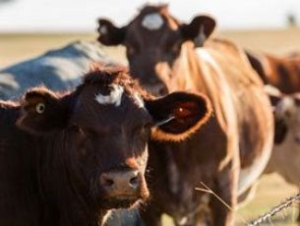News
CME: Feedlot Placements Expected to be Above a Year Ago in July COF Report

The July Cattle on Feed report will provide placement and marketing data for feedlots in June and the semi-annual Cattle inventory report will update the industry on the cow herd and calf crop as of 1 July. Pre-report estimates have been released for both reports and are shared here with permission from the Urner Barry survey.

Analyst expectations, once again, had a wide range around placements. This month, out of 11 analysts surveyed, the group was split with about a third of the analysts expecting placements to be above a year ago, which would be in the top 3 of all-time highs for placements in June. The average among the group was 97.9 percent of a year ago, and the range was wide: 93.2 to 105.7.
Average estimates for marketings was 97.0 percent of a year ago, bringing the average estimate for Cattle on Feed on 1 July to be 101.8. A large difference in placements also has the range of Cattle on Feed estimates to be quite wide as well, ranging from 100.9 to 103.2 percent when compared to last year.
Many of the key indicators for the movement of feeder cattle indicated less volume. Feeder cattle imports from Mexico declined year-over-year, as did weekly auction receipts. Pasture and range conditions as a cheap source of gain and the potential for cattle coming off winter grazing late appears to be where a lot of the discrepancy lies among the analyst community.
Analysts surveyed ahead of 1 July Cattle Inventory tends to be a smaller group of participants that lends itself to tighter ranges, but this too showed analysts on both sides of the cow herd inventory. The average for all cattle and calves came in even with a year ago, as did the beef cow herd.
Analysts wrestled with cattle prices over the last couple of months not showing enough weakness to force significant herd liquidation coupled with higher beef cow and heifer slaughter volumes than the previous year. Year to date beef cow slaughter is up 2.6 percent and heifer slaughter is 7.7 percent higher than 2018’s volume.
Analysts agreed that the dairy herd was down from a year ago, based on monthly Milk Production inventory counts. That subset was estimated at 98.6 percent of a year ago, and dairy cow replacement heifers was seen as also below a year ago at 98.3 percent.
Beef cow replacements were estimated at 98.5 percent of a year ago, indicating that analysts believe that the beef cow herd is unlikely to continue building. It would appear based on the subtle changes in beef cow inventory that analysts expect the beef cattle herd transition to be slow and controlled, and that herd reduction is likely to be at a slower pace than in cycles passed. The annual calf crop estimate was seen as half a percent above a year ago, but the range of the estimates was up 100.1 to 101.2.





















